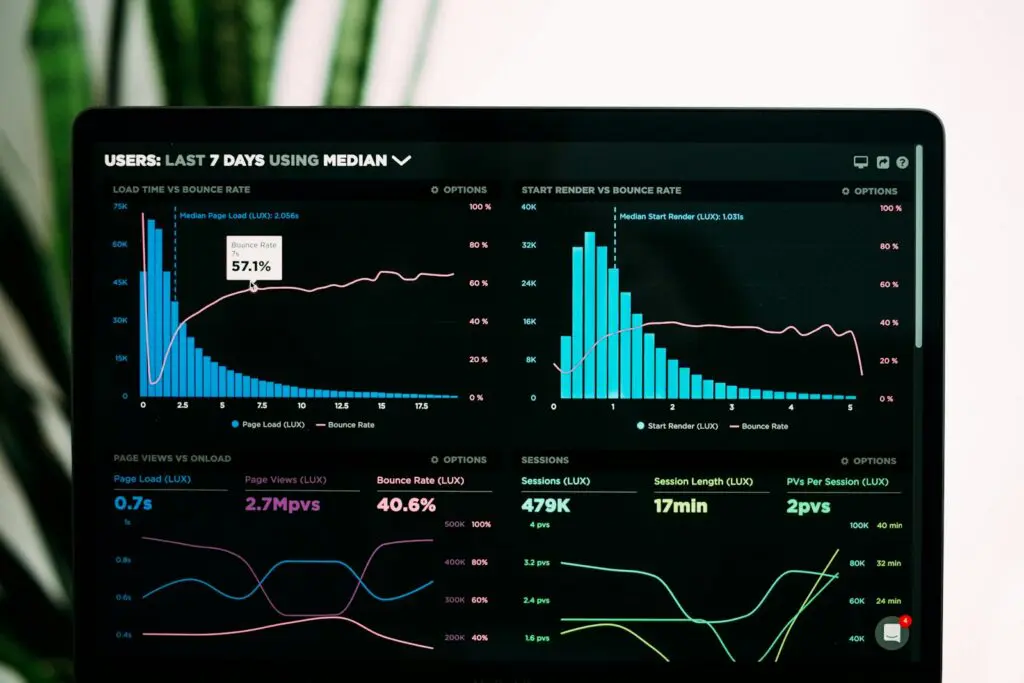
Gain Insights into Your Online Audience Behaviors Through Analytics.
What Are Online Audience Behaviors?
Online audience behaviors refer to the actions and interactions users take while engaging with digital content across websites, social media, and other online platforms. These behaviors provide insights into user preferences, interests, and engagement levels, helping writers and marketers optimize content strategies.
Audience Behaviors to Look for When Creating Content for Websites, Blogs, and Social Media Channels
The first step toward successfully analyzing your online audience behaviors is to understand which online behaviors are meaningful for creating accurate customer personas and targeted marketing content.
Understanding marketing psychology is one of the most crucial skills for new marketers, startups, and small business owners to develop. Learning about what drives your audience to click on one page while abandoning another can make all the difference in your marketing strategty.

The following user behaviors can provide a wealth of analytical data for content marketers.
Content Consumption – Tracking how users read articles, watch videos, or engage with online materials.
Navigation Patterns – Understanding how visitors move through a website, including clicks, menu selections, and page transitions.
Engagement Metrics – Measuring likes, shares, comments, and time spent on content.
Click Behavior – Identifying which links, buttons, or CTAs users interact with.
Search Queries – Analyzing what users type in search engines or site search bars to find relevant information.
Bounce Rate – Monitoring how often visitors leave a page without interacting further.
Potential Conversion Actions – Tracking sign-ups, purchases, downloads, or other goal completions.
Device and Location Data – Understanding audience demographics and how different users access content.
Analyzing user device and location data can provide analytical insights into your online audience behaviors as well as providing useful information for information technology teams should cybersecurity concerns arise.
By analyzing online audience behaviors, businesses can refine their content, enhance user experience, and drive higher engagement and conversions.
What analytics should you monitor on your website to truly grasp your audience’s behavior? Let’s dive into the metrics that can provide valuable insights into your visitors’ preferences and interactions.
Interpret Online Audience Behaviors by Tracking and Monitoring the Following (8) Analytics

1. Website Traffic Sources
Knowing where your visitors come from is like having a roadmap to your audience. Analytics tools can break down your traffic into categories like organic search, social media, direct visits, and referrals. This insight helps you understand which channels are driving the most traffic, allowing you to tailor your content and marketing strategies accordingly.
2. Pageviews and Time on Page:
These metrics offer a glimpse into the popularity and stickiness of your content. High pageviews suggest that visitors find your content intriguing, while a longer time on page indicates deeper engagement. Identify your most popular pages and analyze the content and structure that keeps visitors hooked.
3. Bounce Rate
On the flip side, the bounce rate reveals the percentage of visitors who leave your site after viewing only one page. A high bounce rate may signal that your content isn’t resonating or that your site’s navigation needs improvement. Use this metric to refine your content and enhance the user experience.
4. User Demographics
Understanding your audience’s demographics, such as age, gender, location, and device preference, provides valuable insights for tailoring your content. Platforms like Google Analytics can help you uncover these details, enabling you to create content that resonates with your target audience.
5. Conversion Rate
For those with a specific goal in mind, whether it’s newsletter sign-ups, product purchases, or other conversions, monitoring the conversion rate is crucial. Analyze user journeys to identify potential friction points and optimize your website for a seamless conversion process.
6. Heatmaps and Click Tracking
Visualizing user interactions through heatmaps and click tracking tools can be incredibly enlightening. These tools reveal where users are clicking, scrolling, and lingering on your pages. Use this information to refine your layout and highlight key elements.
7. Social Media Engagement Rates
For those leveraging social media to drive traffic, tracking engagement metrics on platforms like Facebook, Twitter, and Instagram is essential. Monitor likes, shares, comments, and click-through rates to understand how your content performs on social channels.
8. Site Search Analysis Results
If your website has a search function, examining the queries entered by users can provide insights into their specific interests and needs. This knowledge empowers you to create targeted content that directly addresses your audience’s concerns.
Monitoring these key analytics is like holding a compass that guides you through the intricate landscape of your audience’s online behavior. Regularly analyze these metrics, adapt your strategies, and watch as your understanding of your audience grows, leading to more engaging and impactful content.
Remember, the journey to unlocking the secrets of audience behavior is an ongoing process. Stay curious, stay informed, and let the data guide your path to success in the digital realm!